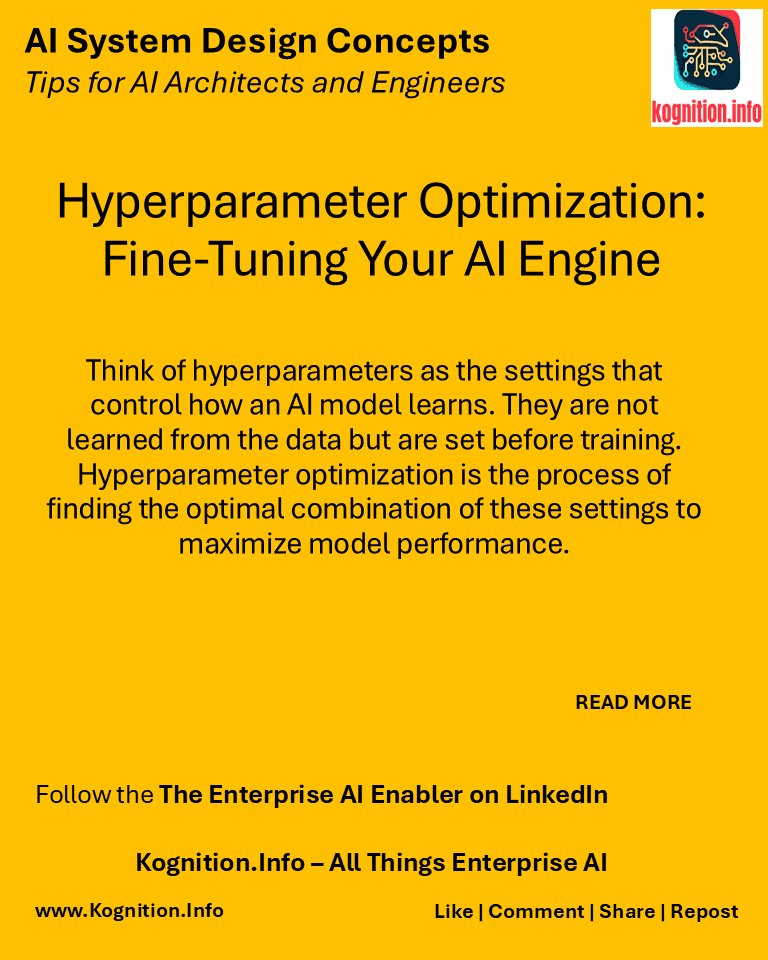
Think of hyperparameters as the settings that control how an AI model learns. They are not learned from the data but are set before training. Hyperparameter optimization is the process of finding the optimal combination of these settings to maximize model performance.
Use cases:
- Tuning learning rate: Finding the optimal learning rate for gradient descent algorithms to ensure efficient convergence.
- Optimizing network architecture: Determining the number of layers and neurons in a neural network for optimal performance.
- Regularization: Finding the right regularization strength to prevent overfitting.
How?
- Define the search space: Specify the range of values for each hyperparameter.
- Choose an optimization algorithm: Select from techniques like Grid Search, Random Search, or Bayesian Optimization.
- Set evaluation metric: Define the metric (e.g., accuracy, F1-score) used to evaluate model performance.
- Run the optimization process: Iteratively train and evaluate models with different hyperparameter combinations.
- Select the best configuration: Choose the hyperparameters that yield the best performance on the validation set.
Benefits:
- Enhanced performance: Finds the best settings to maximize model accuracy and efficiency.
- Automation: Automates the process of finding optimal hyperparameters, saving time and effort.
- Improved generalization: Helps prevent overfitting and improves model robustness.
Potential pitfalls:
- Computational cost: Hyperparameter optimization can be computationally expensive, especially for complex models and large datasets.
- Overfitting to the validation set: Use techniques like cross-validation to avoid overfitting and ensure generalization.
- Local optima: Some optimization algorithms can get stuck in local optima. Consider using multiple starting points or more sophisticated algorithms.
